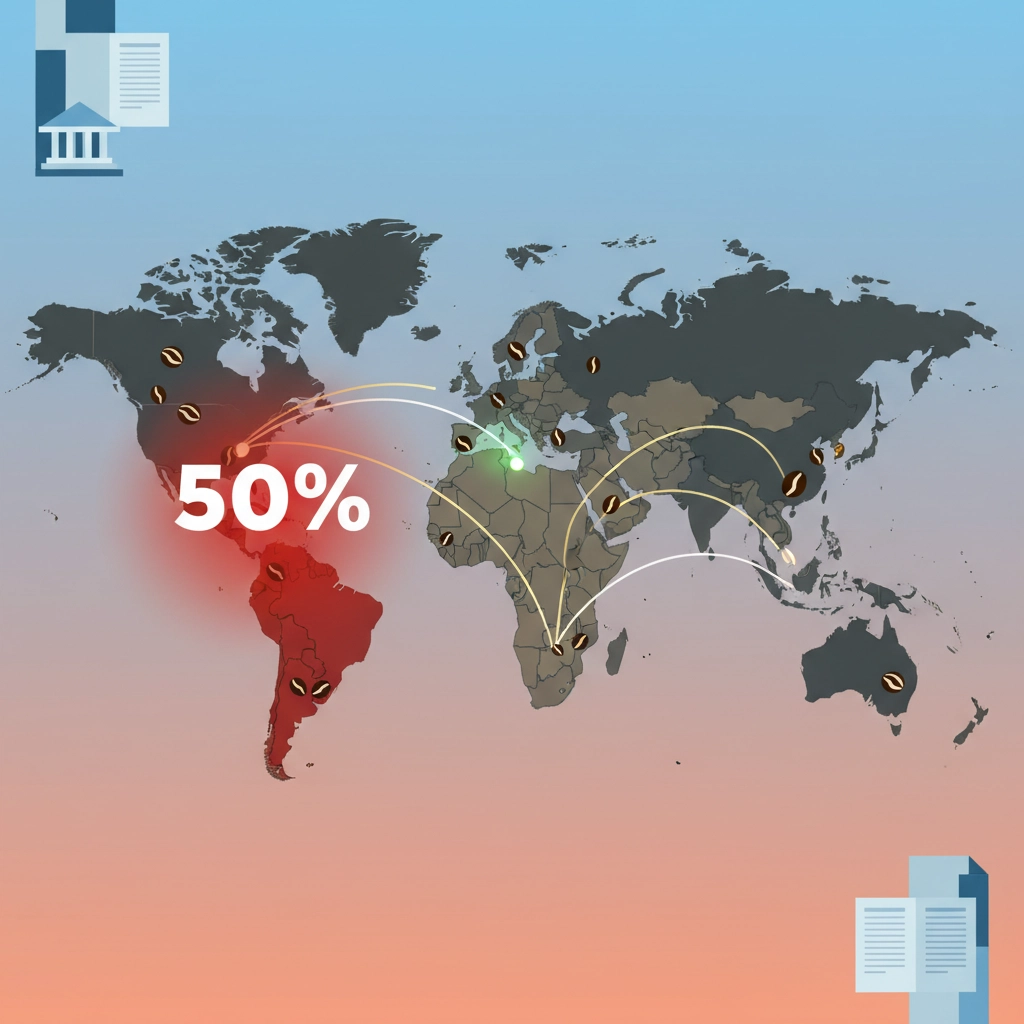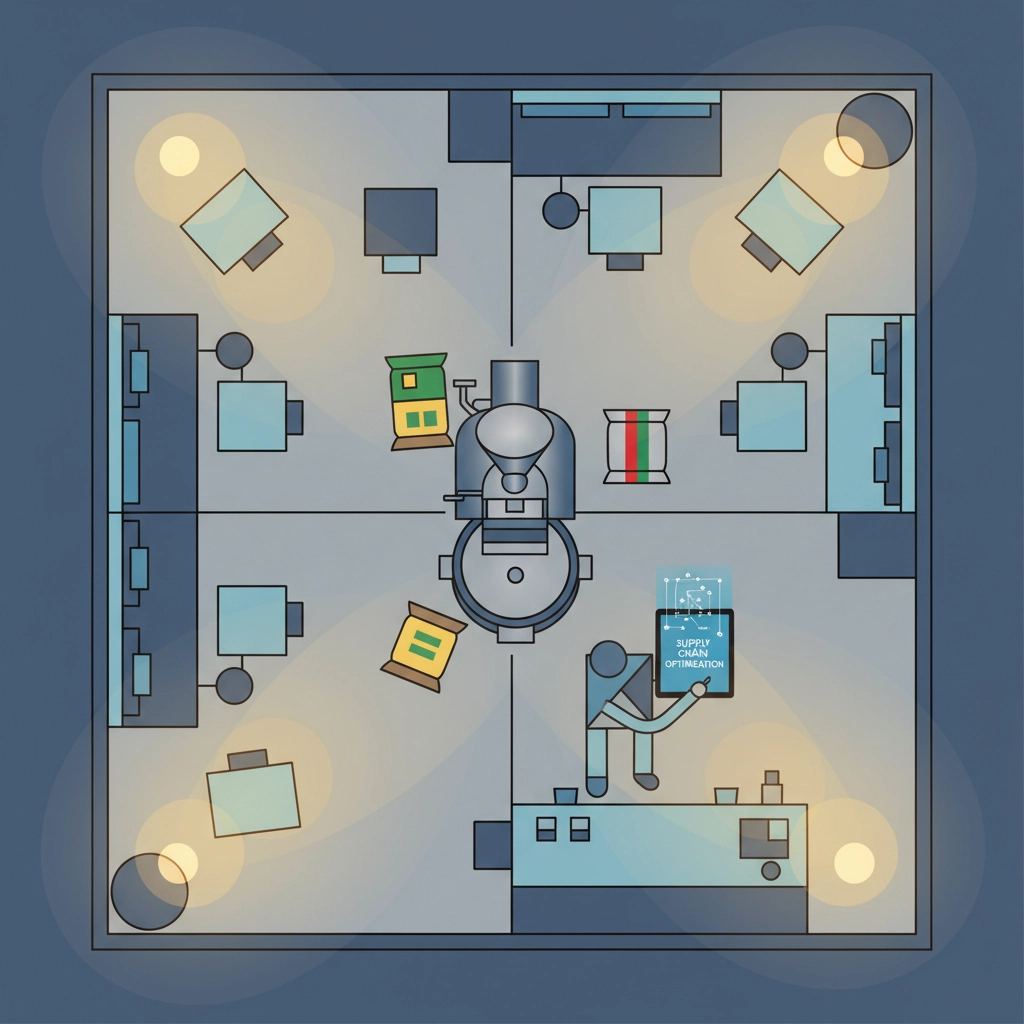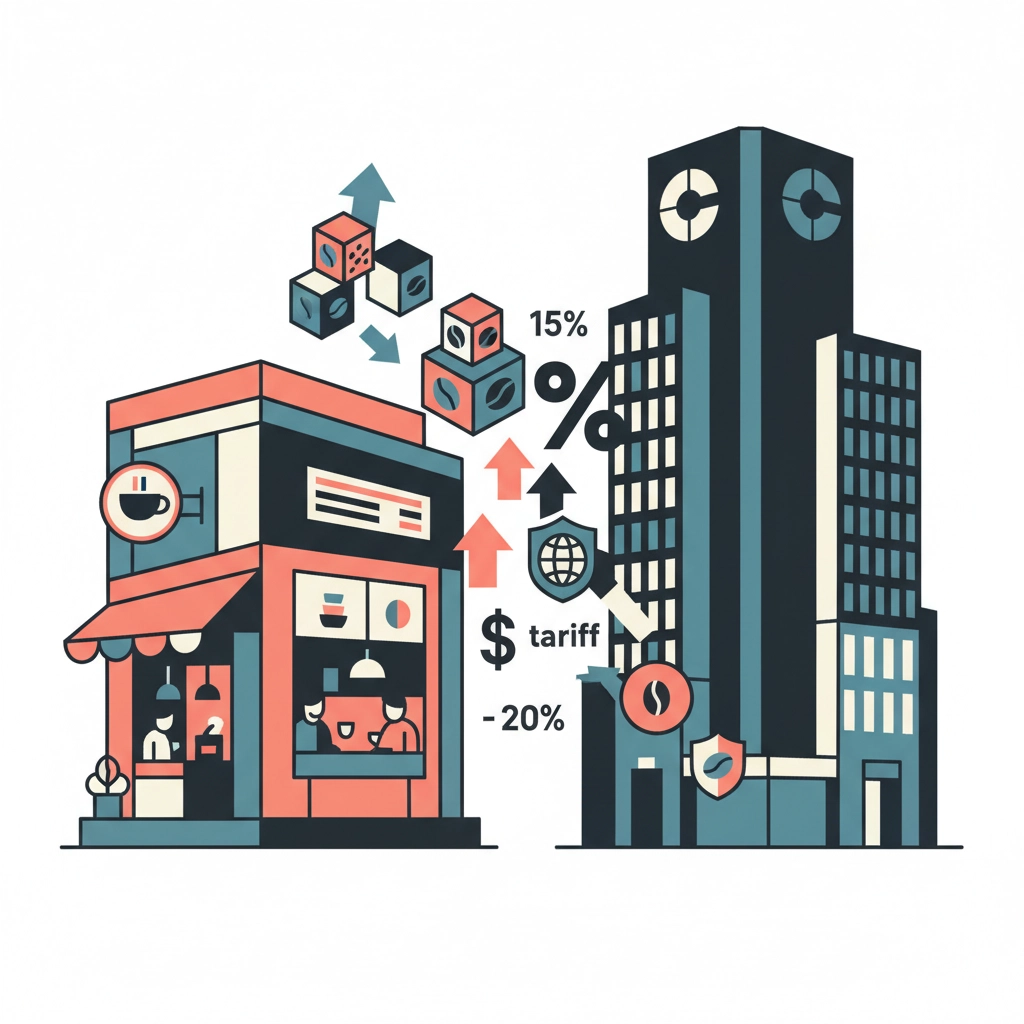Breaking Down Coffee Shop Costs: The Hidden Influences of Government Policies
- Jordan McDaniel

- Nov 6
- 6 min read

Ever wonder why your morning latte costs more this year than last? While you might blame inflation or supply chain hiccups, the real culprit behind rising coffee prices is hiding in plain sight: government policies.
As someone who's been roasting beans and serving Boulder's coffee community for years, I've watched these policy changes ripple through our industry like dominoes falling. What starts as a bureaucratic decision in Washington ends up affecting the price of your daily brew, and the story of how that happens is more complex than you might think.
The Tariff Reality: When Politics Meets Your Coffee Cup
Here's where things get technical, but stick with me: this directly impacts what you pay at Ruzo and every other coffee shop in Boulder.
The biggest policy shaking up coffee costs right now? Tariffs on imported coffee beans. The Trump administration slapped tariffs ranging from 10% to 50% on coffee imports from almost every major coffee-producing country. Brazil, which supplies about 30% of America's coffee, got hit with a whopping 50% tariff. That's like adding a 50-cent tax to every dollar of Brazilian beans we import. For example, our single-origin drip coffee is from Brazil. Our Kiku roast has seen price increases, but we stick with it because it's good quality—and we do what we can to weather changes in the macroeconomic landscape.

The only major exception? Mexico, thanks to the U.S.-Mexico-Canada Agreement (USMCA). This has created a strange situation where geography suddenly matters more than quality when coffee shops choose their beans.
Coffee prices jumped 21.7% in August compared to the same time last year—the biggest price increase since 1997. That's not a coincidence. When Supreme Court hearings about these Trump-era tariffs hit the news recently, they reminded everyone in our industry that these policies aren't going anywhere soon.
The Multiplier Effect: How a 10% Tariff Becomes a 20% Price Hike
This is where the economics get really interesting (and frustrating). A tariff doesn't just add its percentage to your final coffee price—it multiplies through the supply chain like a game of telephone gone wrong.
Here's how it works: When importers pay that 50% tariff on Brazilian coffee, they don't just absorb the cost and call it a day. They pass 60-85% of that expense to roasters like us. But then roasters face additional costs: we need bigger cash reserves to buy inventory, we're taking on more financial risk, and we're dealing with volatile pricing that makes planning nearly impossible.
The result? A 10% tariff at the import level often translates to a 15-20% increase at the roaster level. It's like a twisted version of compound interest, except instead of your savings growing, it's coffee prices that keep climbing.
Let me break down the real numbers: Standard drip coffee has seen an 18.2% price increase since these tariffs took effect. Specialty single-origin coffees? That jumps to 27.8%. And if you're buying bags of coffee to take home, those prices have risen 20.1%. Some coffee roasters in Boulder have turned to a shrinkflation strategy—selling their product at the same price but including less coffee in each bag. Over the last 20 years, the coffee industry has seen this pattern repeat. Many people remember when the standard amount of coffee you bought at the store was 16 ounces (1 lb). The current standard in the American market is about 12 ounces per bag, and some roasters are even dropping it to 8 or 10 ounces.
Real Coffee Shops, Real Adaptations
The impact isn't theoretical: it's forcing coffee shops across the country to make tough decisions. At Grind House Coffee in California, owner Ron Richie completely shifted away from Brazilian beans toward Mexican coffee to dodge tariff exposure. He used to offer Brazilian single-origins; now his menu looks entirely different.
But here's the catch: making these switches isn't just about swapping one origin for another. Richie places weekly coffee orders between $1,000 and $4,000, and he's had to become an expert in international commodity markets just to keep his doors open.
The situation gets even more dire for roasters who built their reputation on Brazilian coffee. Alakef Coffee Roasters in Minnesota sources heavily from Brazil, and their CEO put it bluntly: "If a tariff remains on Brazil, I don't know if we'll survive."
How Boulder Coffee Shops Are Navigating the Storm
Right here in Boulder, we're all feeling these pressures. At Ruzo, we've had to become more strategic about our sourcing, more careful about our pricing, and more creative about managing costs without compromising the quality you expect.

Some of the changes you might not notice: We're placing smaller, more frequent orders instead of buying in bulk. This helps us respond quickly when prices spike, but it also means more time spent on procurement and less predictable costs. We're also diversifying our supply chains: instead of relying on one or two origins, we're building relationships with roasters from multiple countries.
The goal isn't just to survive these policy changes but to maintain the community-focused, high-quality experience that makes Boulder's coffee scene special. That means absorbing some costs ourselves rather than passing everything directly to customers.
Beyond Coffee: The Hidden Secondary Costs
Here's what really gets complex: coffee tariffs are just the beginning. These policies create a web of secondary cost increases that most people never see coming.
Take packaging, for example. If you're a coffee shop that sources cups, lids, and sleeves from China (which most do), those have all gotten more expensive thanks to tariffs on Chinese goods. At 787 Coffee in Puerto Rico, the owner had to postpone hiring new staff and extending his lease because packaging costs were eating into his margins.

Labor shortages are adding another layer of pressure. With fewer people willing to work in food service, wages have increased across the board. That's not necessarily a bad thing—everyone deserves fair pay—but it's another cost that small coffee shops have to absorb or pass along.
The cruel irony? Large corporate coffee chains can weather these storms much better than independent shops. They have diversified supply chains, economies of scale, and financial cushions that small businesses like Ruzo simply don't have. Every policy change hits small coffee shops harder, making it tougher for local businesses to compete with the big players.
The Uneven Burden: Who Really Pays?
When economists break down how tariff costs get distributed through the coffee supply chain, the numbers are eye-opening:
Coffee producers and farmers: 15-25% of the cost (through lower purchase prices)
Importers and roasters: 30-45% of the cost
Retail coffee shops: 10-20% of the cost
Consumers (that's you): 25-40% of the cost
But these percentages shift dramatically based on market position. Small specialty importers and roasters bear more of the burden because they can't negotiate better rates or shift sourcing as easily as major corporations.
Meanwhile, the geographic impact varies too. Metropolitan areas like Boulder have shown more pricing resilience than rural markets, partly because of competition dynamics and partly because urban coffee drinkers are generally more willing to pay premium prices for quality.
Looking Ahead: What This Means for Your Coffee Routine
Congressional efforts to repeal some of these import tariffs have made headlines recently, but the political reality is that major policy changes take time. Even if tariffs were eliminated tomorrow, the supply chain relationships that have been disrupted over the past few years won't rebuild overnight.
What does this mean for you as a Boulder coffee drinker? Prices probably aren't coming down significantly anytime soon. The good news is that coffee shops like Ruzo have gotten creative about maintaining value while managing costs. We're focusing on quality, community, and creating experiences that justify the price you pay.

The coffee industry has always been resilient, adapting to everything from climate change to political upheaval. These government policy challenges are just the latest chapter in that story. By understanding the hidden influences shaping your coffee costs, you're better equipped to make informed choices about where and how you spend your coffee dollars.
When you choose to support local coffee shops like Ruzo, you're not just buying a drink—you're investing in a business that's navigating complex policy challenges while maintaining its commitment to quality and community. And honestly, that makes every sip taste a little better.
Found this breakdown helpful? Share it with fellow coffee lovers who might be wondering why their morning brew costs more these days. And next time you're atRuzo Coffee, feel free to ask us about our sourcing strategies: we're always happy to talk shop about the beans behind your favorite drinks.
Sources
AP News (Oct 24, 2025): US coffee prices spike due to tariffs and poor weather - https://apnews.com/article/coffee-prices-tariffs-climate-3503a37a8fc95b7dc5a1f29747c81e27
NerdWallet (Oct 27, 2025): Tariffs Are a Buzzkill for the Coffee Biz - https://www.nerdwallet.com/finance/learn/coffee-prices
Food Navigator USA (Nov 5, 2025): Supreme Court to decide fate of Trump tariffs - https://www.foodnavigator-usa.com/Article/2025/11/05/supreme-court-to-decide-fate-of-trump-tariffs/
Daily Coffee News (Sep 29, 2025): Report: U.S. Coffee Shop Coffee Prices Are Rising - https://dailycoffeenews.com/2025/09/29/report-u-s-coffee-shop-coffee-prices-are-rising/
10News (Sep 19, 2025): Coffee prices surge as tariffs force local shops to adapt business strategies - https://www.10news.com/news/local-news/coffee-prices-surge-as-tariffs-force-local-shops-to-adapt-business-strategies



Great insight!